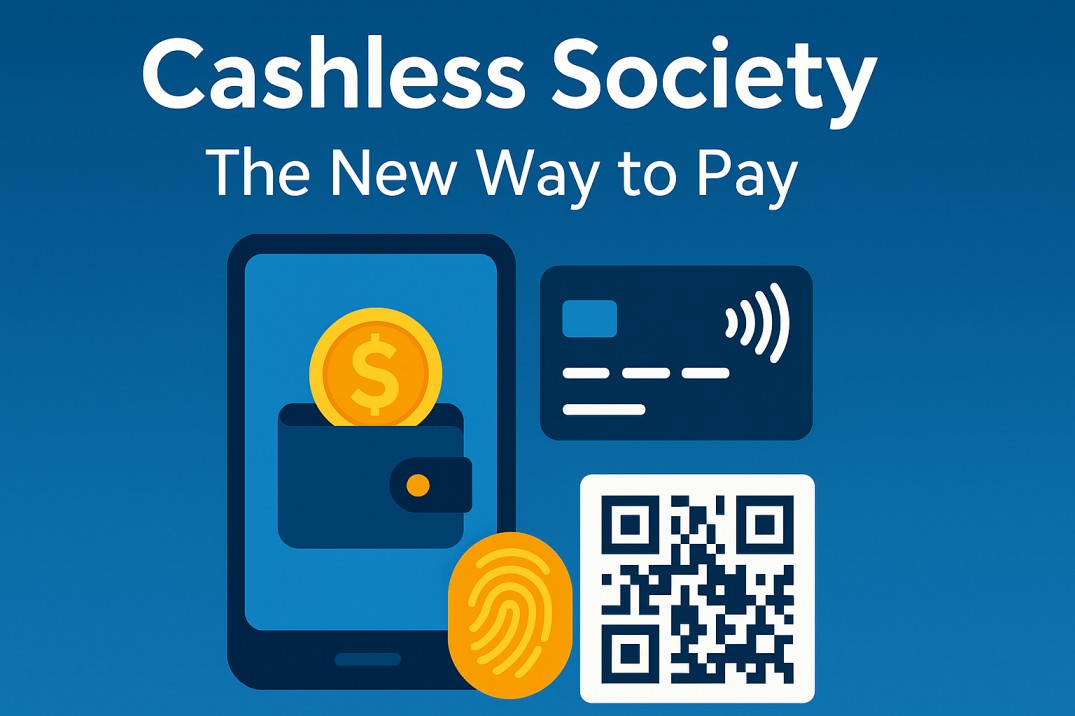In our everyday lives, the sound of coins jingle and the touch of paper money is quickly becoming a lost past time. Contactless cards and mobile payment platforms have fundamentally changed how we think about payment. This movement towards a cashless society is not just a transformation in technology, but a complete environmental change in what money is.
The Digital Payment World: More than Convenience
The digital payment world is much more than a simple means of buying something with your credit card. Mobile wallets like Apple Pay, Google Pay, or Samsung Pay have made smartphones the device we most often reach for to make purchases. Peer-to-peer payments such as Venmo, Zelle, and Cash App have fundamentally changed how we split the bill with friends or family when we go out to eat. Buy Now, Pay Later (BNPL) services such as Klarna and Afterpay are also changing our consumer spending habits in a completely different direction.
The technology used in these systems has changed tremendously. Near Field Communication (NFC) technology provides tap-to-pay capabilities whereas QR codes offer payment solutions regardless of what smartphone you have. Biometric authentication in the form of fingerprints and facial recognition has enabled these transactions to easily be more secured than ever before.
Global Adoption: A Story That Moves at Different Speeds
The move to cashless transactions vastly differs by region. Nordic countries like Sweden and Norway are on the leading edge of the elimination of cash altogether, with some businesses even refusing cash payments. Cash transactions now comprise less than 10% of transactions in Sweden alone. Sweden has targeted to be cashless by 2030.
In China, there may be the most drastic change of all. Mobile payment platforms WeChat Pay and Alipay have established themselves as the primary means of daily commerce. Street vendors, taxi drivers, even beggars accept this method of payment. The evolution in China was made possible as a large number of the population was unbanked, which allowed them to simply jump over traditional banking solutions to mobile applications.
On the other hand, countries like Germany and Japan will seem to resist the cashless adoption, mainly due to a cultural preference for privacy and traditional cash payment methods. The US is somewhere in between, as some urban areas have embraced digital payments, rural areas still have a preference for cash.
Benefits: Speed, Security, and Inclusion
Digital payments have many appealing benefits that fuel their adoption. The speed of each transaction is arguably the best benefit—contactless payments go through in seconds versus the time needed for counting cash and making change! This reduction in transaction time means shorter lines, eliminated wait times, and happier customers.
In addition to faster transaction times, digital payments greatly enhance your business’s security against theft and fraud. Digital payments as opposed to cash payments are traceable, reversible, and physically un-stealable. Digital payments also use advanced encryption technology and tokenization methods to secure your sensitive financial information, and can take advantage of biometric authentication.
Likewise, digital payments offer potential for financial inclusion. Mobile payment systems afford the underbanked and unbanked populations a path to formal participation in the economy. The M-Pesa mobile money system in Kenya mobilizes financial services for millions of people previously outside the traditional banking system. Digital payments not only bridge the gap between dollars and bricks, they also bridge the gap between economic realities.
The Challenges: Privacy, Exclusion, and Control
While these advantages are significant, the cashless transition does raise some concerns. Privacy advocates are concerned about comprehensive financial systems that create surveillance structures allowing tracking of everyone’s transaction. With cash, it’s possible to make anonymous transactions. Digital payments generate detailed information about an individual’s spending patterns, the locations where they shop, and what they purchase.
Digital exclusion is another major concern. Elderly people, people who do not own smart phones and/or bank accounts, and people in rural areas with limited broadband may find themselves unable to participate in an increasingly cashless economy. The digital divide may increasingly introduce economic inequality, resulting in a two-tier society that does not have ready access to basic goods and services without technological literacy and access.
The concentration of payment processing in the hands of a few major technological companies raises questions about the monopolization of the financial infrastructure. When a handful of companies control payment rails, such companies are additionally exerti
Farming and Floods: Tech for a Warmer World
Explore more tech updates here → Click here

